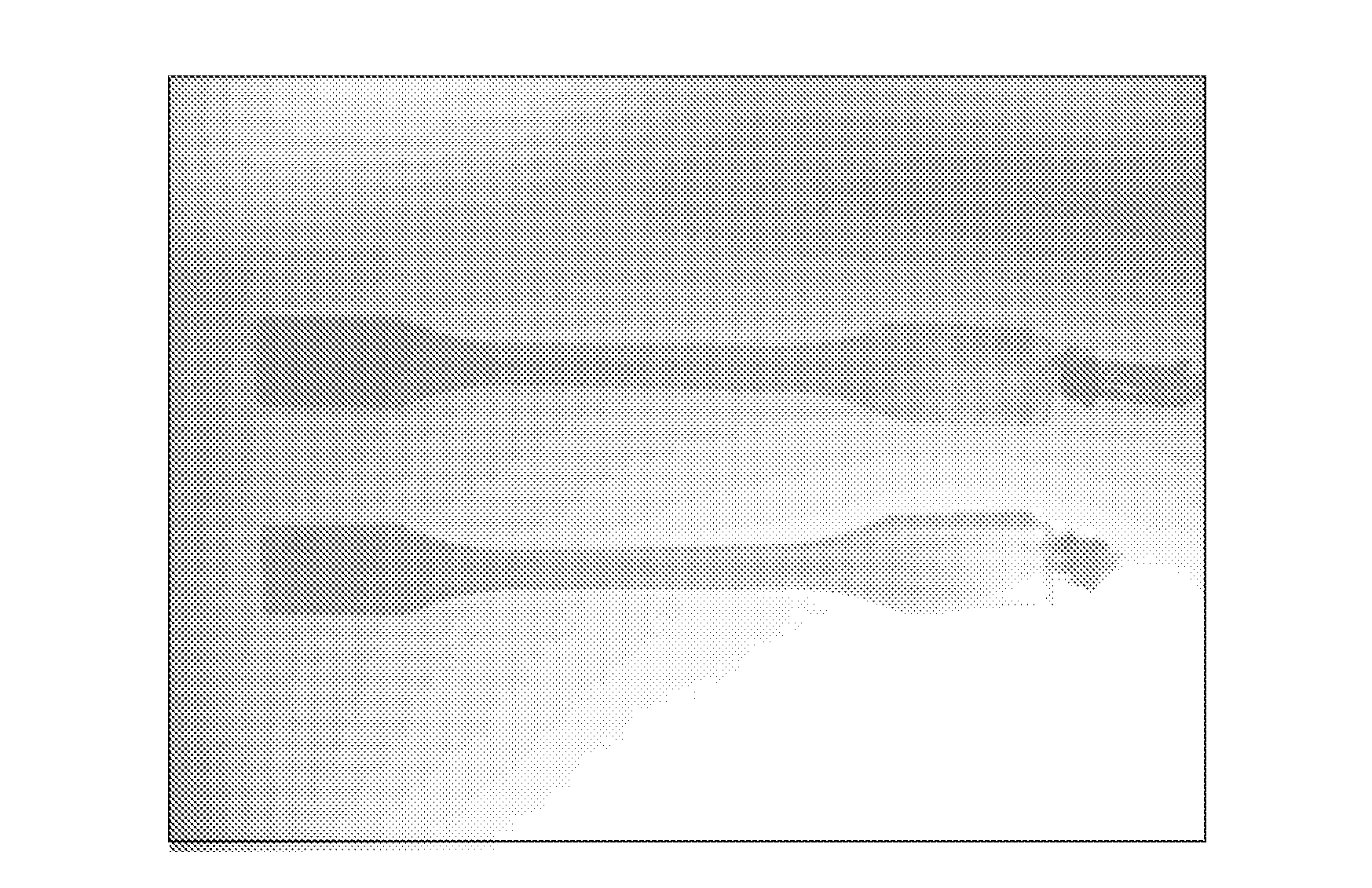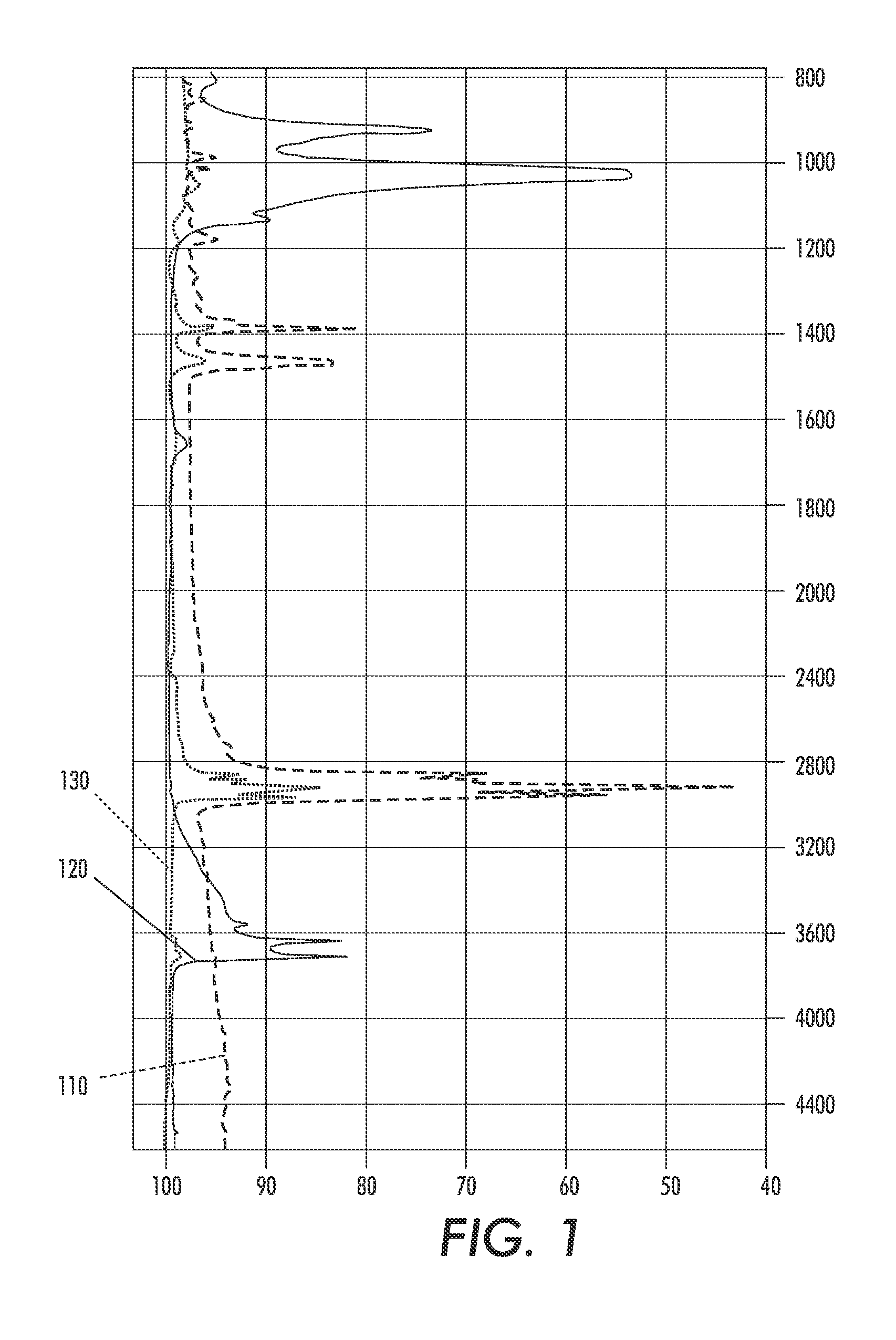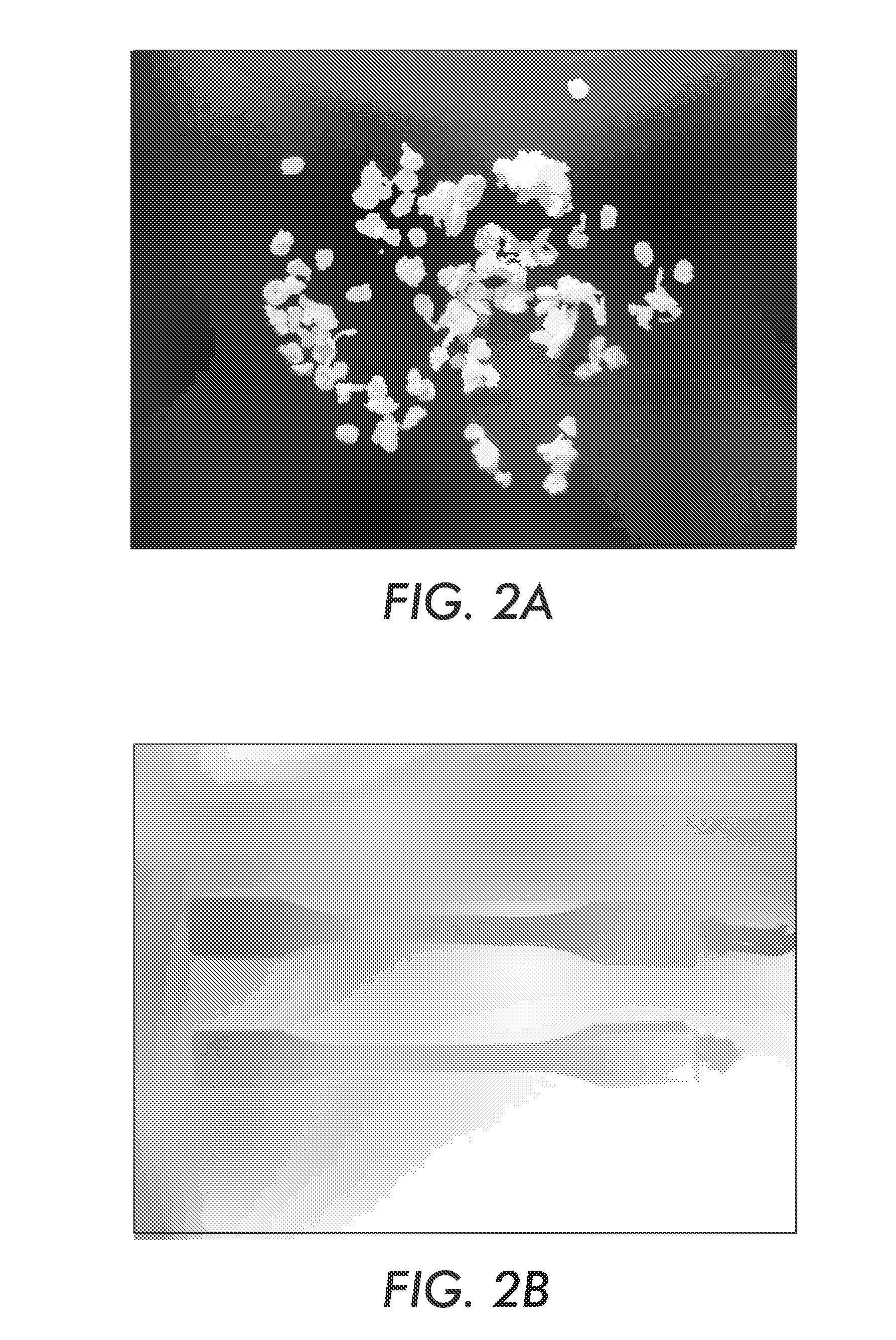Nanocomposite master batch composition and method of manufacture
a nanoparticle filler and master batch technology, applied in the field of new polymeric composites including nanoparticle fillers, can solve the problems of compromising mechanical properties, limited amount of fillers that can be used, and inability to extrude high-load materials, etc., to achieve the effect of improving or equivalence mechanical performan
- Summary
- Abstract
- Description
- Claims
- Application Information
AI Technical Summary
Benefits of technology
Problems solved by technology
Method used
Image
Examples
example 1
To make a Master batch (Yield approx. 100 g):
1. In a large beaker or glass reaction vessel, heat 2000 ml mixed xylenes, with mild vortex stirring, to 115° C.
2. Dissolve 100 grams polypropylene (PP), such as Exxon-Mobil PP1024E4, into the xylene (e.g., mono or mixed isomers), maintaining temperature and stirring. Keep boiling to a minimum to prevent significant loss of solvent (and staying below the polymer decomposition temperature). Depending on the size of PP particles (beads, powder, etc.), the time to complete dissolution varies from minutes to hours and is related to the energy introduced via heating and mixing as well as the properties of the polymer, solvent, and the nature of the combination. Maintain approximate volume of solution by adding xylene as needed, or by refluxing. FIG. 3, step 310 is intended to represent such dissolution.
3. Add 1.6 g of benzalkonium chloride (BAC) in 100 ml xylene in a glass vial or beaker. A portion of the BAC will be dissolved whereas some BAC...
example 2
An alternative process for making a master batch is as follows (Yield approx. 26.25 g):
1. In a 2 liter beaker or glass reaction vessel, heat 500 ml mixed xylenes (e.g., mono or mixed isomers), with mild vortex stirring, to 115° C.
2. Dissolve 25 grams polypropylene (PP), such as Exxon-Mobil PP1024E4, into xylene, maintaining temperature and stirring. Keep boiling to a minimum. Depending on the size of PP particles (beads, powder, etc.), the time to complete dissolution varies from minutes to hours. Maintain approximate volume of solution by adding xylene as needed, or by refluxing.
3. Suspend and / or dissolve 0.39 g of benzalkonium chloride (BAC) in 25 ml xylene in a glass vial. Utilize either a horn sonicator or an ultrasonic bath for this purpose while maintaining constant room temperature.
4. Add 1.25 g of dried halloysite (e.g., Premium EG, NancoClay and Technologies, air milled and dried at 110° C.; or alternative inorganic mineral as disclosed above) to the 25 ml xylene / BAC mixtur...
PUM
| Property | Measurement | Unit |
|---|---|---|
| diameter | aaaaa | aaaaa |
| wt % | aaaaa | aaaaa |
| mechanical performance | aaaaa | aaaaa |
Abstract
Description
Claims
Application Information
 Login to View More
Login to View More - R&D
- Intellectual Property
- Life Sciences
- Materials
- Tech Scout
- Unparalleled Data Quality
- Higher Quality Content
- 60% Fewer Hallucinations
Browse by: Latest US Patents, China's latest patents, Technical Efficacy Thesaurus, Application Domain, Technology Topic, Popular Technical Reports.
© 2025 PatSnap. All rights reserved.Legal|Privacy policy|Modern Slavery Act Transparency Statement|Sitemap|About US| Contact US: help@patsnap.com



